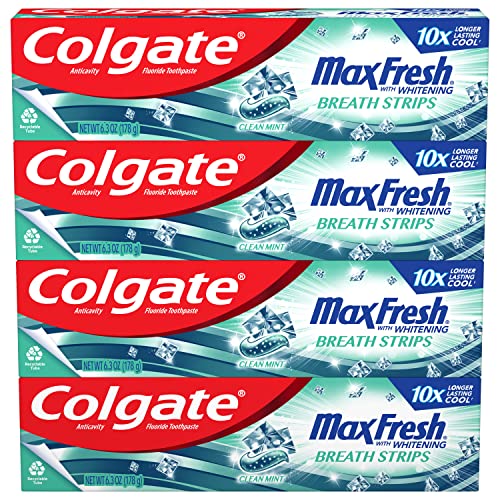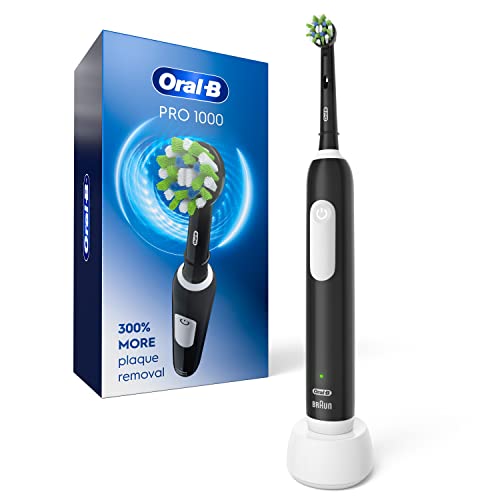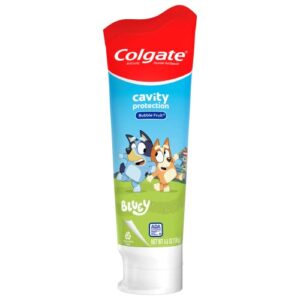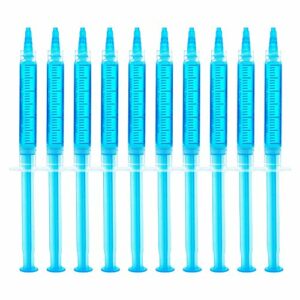As parents and caregivers, we all want our children to have fresh breath and a healthy smile. But when it comes to choosing toothpaste for our little ones, it can be confusing to know what is safe and effective. In this blog post, we want to address your concerns and provide you with the information you need to make the best decision for your child’s oral health. So let’s dive in and explore whether children can use regular toothpaste for fresh breath, or if there are specific options designed just for them.
Find the Perfect Toothpaste for Long-Lasting Freshness
Understanding the different types of toothpaste
When it comes to maintaining good oral hygiene, choosing the right toothpaste is crucial. With a wide range of options available in the market, it can be overwhelming to pick the one that suits your specific needs. In this article, we will explore the various types of toothpaste and help you understand which one is best for you and your family.
Toothpaste for Adults
1. Fluoride Toothpaste
- Contains fluoride, a natural mineral that helps strengthen tooth enamel and prevent tooth decay.
- Ideal for adults who have a high risk of developing cavities or those who want to maintain their oral health.
2. Whitening Toothpaste
- Contains mild abrasives that help remove surface stains and make your teeth appear brighter.
- Suitable for individuals who desire a whiter smile but have no severe teeth discoloration or staining.
3. Sensitivity Toothpaste
- Formulated with desensitizing agents to provide relief from tooth sensitivity caused by hot or cold food and drinks.
- Recommended for individuals with sensitive teeth or those who experience discomfort while consuming certain foods.
4. Gum Care Toothpaste
- Contains ingredients that help prevent gum disease, reduce gum inflammation, and promote gum health.
- Ideal for individuals who have gum-related issues such as bleeding gums, gingivitis, or periodontitis.
5. Natural Toothpaste
- Made with natural ingredients, such as plant extracts and essential oils, without any artificial additives or harsh chemicals.
- Suitable for individuals who prefer a more organic and eco-friendly approach to oral care.
Toothpaste for Children
1. Fluoride Toothpaste
- Similar to adult fluoride toothpaste, but with a lower concentration of fluoride to ensure safety for children.
- Essential for children to protect their developing teeth from cavities and promote healthy tooth enamel.
2. Fruit-Flavored Toothpaste
- Designed with appealing flavors such as strawberry, bubble gum, or watermelon to make brushing more enjoyable for children.
- Helps encourage regular brushing habits and establish good oral hygiene practices from an early age.
3. Training Toothpaste
- Typically non-fluoridated and safe to swallow, as it’s specifically formulated for young children who haven’t learned to spit out toothpaste yet.
- Introduces children to the habit of brushing their teeth and prepares them for using regular toothpaste.
Fresh Breath and Children: Understanding the Causes and Boosting Confidence
As parents, we often pay attention to our children’s physical health, but we sometimes overlook the importance of their oral hygiene. Fresh breath is not only crucial for their overall well-being, but it also plays a significant role in their self-confidence. In this blog section, we will explore the common causes of bad breath in children and provide you with practical tips on how to maintain their oral health and boost their self-esteem.
Common Causes of Bad Breath in Kids
- Poor Dental Hygiene: Insufficient brushing and flossing can allow bacteria to accumulate in the mouth, leading to unpleasant odors. Children may struggle with thorough oral care due to limited motor skills or lack of knowledge.
- Dry Mouth: Certain medications or breathing through the mouth can cause dryness in the mouth, leading to a buildup of bacteria and resulting in bad breath.
- Tongue Coating: The tongue’s surface can harbor bacteria, food particles, and dead cells, which can contribute to bad breath if not adequately cleaned.
- Dietary Factors: Consuming foods with strong odors, such as garlic, onions, or spices, can cause temporary bad breath. Additionally, sugary snacks and drinks can promote bacterial growth in the mouth, leading to long-lasting halitosis.
The Impact on Self-Confidence
Bad breath can have a profound impact on a child’s self-confidence and social interactions. If a child is constantly worried about their breath, they may become more withdrawn and avoid socializing with their peers. This can result in feelings of embarrassment, low self-esteem, and even lead to bullying or exclusion.
Teaching Children about Oral Hygiene
Instilling good oral hygiene habits in children from an early age is essential for preventing bad breath and maintaining optimal oral health. Here are some practical tips to educate your children:
- Brush Twice a Day: Encourage your child to brush their teeth thoroughly for at least two minutes, using a soft-bristled toothbrush and fluoride toothpaste. Supervise them until they can do it effectively on their own.
- Floss Daily: Teach your child the importance of flossing to remove food particles and plaque from between their teeth. Start with child-friendly flossers or picks to make it easier for them.
- Clean the Tongue: Show your child how to gently clean their tongue using a tongue scraper or by brushing their tongue with their toothbrush.
- Encourage Healthy Eating: Promote a balanced diet rich in fruits, vegetables, and whole grains. Limit sugary snacks and drinks, as they can contribute to bad breath and tooth decay.
The Role of Toothpaste in Fresh Breath
Toothpaste plays a crucial role in maintaining fresh breath and overall oral hygiene. Consider the following benefits:
- Freshens Breath: Toothpaste contains ingredients like mint or other refreshing flavors that leave a pleasant taste and smell in the mouth.
- Removes Plaque: Using toothpaste with fluoride helps remove plaque, preventing tooth decay and bad breath.
- Strengthens Teeth: Fluoride toothpaste strengthens tooth enamel, making teeth more resistant to decay and acid attacks.
- Fights Bacteria: Toothpaste with antibacterial properties helps control the growth of harmful bacteria in the mouth.
By choosing the right toothpaste for your child and ensuring they use it correctly, you can enhance their oral hygiene routine and significantly reduce the risk of bad breath.
Remember, maintaining fresh breath in children is not just about physical health; it’s also about building their self-confidence. By teaching them proper oral hygiene practices and emphasizing the importance of fresh breath, you are equipping them with the tools to face the world with a healthy and confident smile.
Specific toothpaste options for children
Choosing the right toothpaste for your child can be a daunting task, considering the wide array of options available in the market. To make this process easier for you, we have compiled a list of specific toothpaste options that are tailored to meet the unique needs of children. Let’s dive in!
Fluoride Content: Finding the Right Balance
Fluoride is an essential ingredient in toothpaste as it helps strengthen tooth enamel and prevent tooth decay. However, it is important to strike the right balance when it comes to fluoride content in children’s toothpaste. Too much fluoride can cause fluorosis, a condition that affects the appearance of tooth enamel.
Here are some toothpaste options with varying fluoride content:
- Low Fluoride Toothpaste: These toothpastes contain a lower concentration of fluoride, making them suitable for younger children who may not be able to spit out toothpaste properly.
- Age-Appropriate Fluoride Toothpaste: As your child grows older and becomes better at spitting out toothpaste, you can switch to toothpastes with higher fluoride content, which provide increased protection against tooth decay.
Flavor Preferences: Making Brushing Fun
Children often have specific flavor preferences, and finding a toothpaste that they enjoy can make the brushing experience much more enjoyable. Here are some toothpaste options with different flavors to cater to your child’s taste buds:
- Fruity Flavored Toothpaste: These toothpastes come in a variety of fruity flavors like strawberry, watermelon, and bubblegum, making brushing feel like a sweet treat.
- Mint Flavored Toothpaste: Mint-flavored toothpastes are a popular choice among older children who prefer a refreshing and minty taste.
Age-Appropriate Formulations: Growing with Your Child
Children have different oral care needs at different stages of their development. Toothpaste formulations that cater to these specific needs can help maintain their oral health effectively. Here are some toothpaste options with age-appropriate formulations:
- Infant Toothpaste: Specifically formulated for babies, these toothpastes are safe to swallow and contain gentle ingredients suitable for delicate gums.
- Children’s Toothpaste: Designed for older children, these toothpastes provide additional protection against cavities and often come in fun packaging to make brushing more exciting.
Key Points to Consider:
To summarize the important details and benefits of the toothpaste options discussed above, here is a handy bullet point list:
- Choose toothpaste with the right fluoride content for your child’s age and ability to spit out toothpaste properly.
- Consider your child’s flavor preferences to make brushing a fun and enjoyable experience.
- Opt for age-appropriate toothpaste formulations to meet your child’s specific oral care needs.
By considering these factors and exploring the specific toothpaste options available for children, you can make an informed decision and ensure that your child’s dental hygiene routine is both effective and enjoyable.
Remember, it is always a good idea to consult with your child’s dentist for personalized recommendations and guidance on the best toothpaste for your child’s unique needs. Happy brushing!
Tips for Encouraging Good Oral Hygiene Habits
When it comes to oral hygiene, instilling good habits early on is crucial for maintaining your child’s dental health. Here are some practical tips to help you encourage good oral hygiene habits in your little ones:
1. Make Brushing Fun
- Use a colorful and age-appropriate toothbrush: Let your child choose a toothbrush with their favorite character or color to make brushing more exciting.
- Play their favorite song or use a timer: Set a timer for two minutes or play their favorite song to make brushing more enjoyable and ensure they brush for the recommended time.
- Consider an electric toothbrush: Vibrating or oscillating toothbrushes can make brushing more entertaining for children.
2. Lead by Example
Children often look up to their parents and mimic their behavior. Show your child how important oral hygiene is by practicing good habits yourself:
- Brush your teeth together: Make toothbrushing a family activity by brushing your teeth alongside your child. This will not only demonstrate the importance of oral care but also provide an opportunity for quality bonding time.
- Let them watch you brush: Allow your child to observe you brushing your teeth, emphasizing the proper technique and how to reach all areas of the mouth.
3. Teach Proper Brushing Techniques
Ensure your child understands the correct brushing techniques to effectively clean their teeth:
- Use a pea-sized amount of toothpaste: Teach your child to use an appropriate amount of toothpaste to prevent excessive swallowing.
- Show them circular motions: Demonstrate how to brush in gentle, circular motions to effectively remove plaque and food particles.
- Don’t forget the tongue: Emphasize the importance of gently brushing the tongue to eliminate bacteria and freshen breath.
4. Establish a Dental Care Routine
Create a consistent dental care routine to make oral hygiene a regular part of your child’s day:
- Set a schedule: Designate specific times for brushing, such as after breakfast and before bedtime, to establish a routine.
- Introduce flossing: Teach your child how to floss their teeth once they have multiple teeth touching each other.
- Regular dental check-ups: Schedule regular visits to the dentist to monitor your child’s oral health and ensure any issues are addressed promptly.
5. Reinforce Positive Reinforcement
Encourage your child’s progress and efforts in maintaining good oral hygiene habits:
- Praise their efforts: Recognize and praise your child’s commitment to brushing their teeth regularly.
- Use a rewards system: Create a reward chart where your child can earn stickers or small rewards for consistent oral hygiene practices.
- Make it a game: Turn toothbrushing into a game by using toothbrushing apps or educational videos that engage your child and make the experience more enjoyable.
Remember, patience is key when it comes to teaching your child good oral hygiene habits. By following these tips and making oral care a positive and enjoyable experience, you are setting the foundation for a lifetime of healthy smiles.
Promoting fresh breath in children: finding toothpaste options suitable for their needs
In conclusion, we understand the importance of maintaining fresh breath for children, but it is essential to consider their specific needs when selecting toothpaste. While they can use regular toothpaste, there are specific options available that are age-appropriate, safe, and effective. We recommend seeking guidance from a pediatric dentist or healthcare professional to ensure you choose the right toothpaste for your child. They can provide personalized advice and recommendations based on your child’s unique requirements. Taking this extra step will help ensure your child maintains good oral hygiene and fresh breath.






















